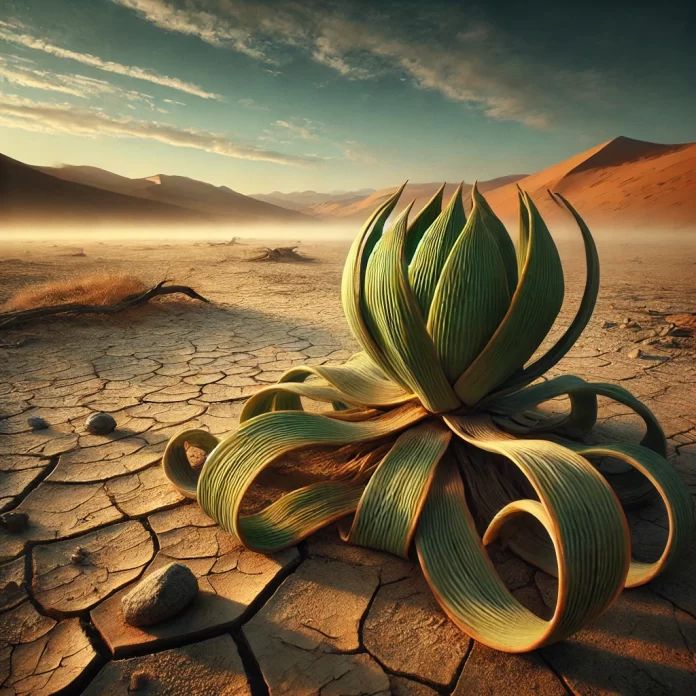Imagine a plant that has been alive for over a thousand years, growing in one of the harshest deserts on Earth. It doesn’t look like any plant you’ve ever seen, and its survival is nothing short of a miracle. Meet Welwitschia mirabilis, a living fossil and a true marvel of nature. In this episode we’re exploring the story of this bizarre, ancient plant from the Namib Desert. How has it survived for millennia in such an unforgiving environment? Let’s find out.
Welwitschia mirabilis is one of the strangest plants on Earth. Native to the Namib Desert of Namibia and Angola, this ancient species is often called the ‘living fossil.’ It belongs to a group of plants called gymnosperms, which predate flowering plants by millions of years.
Here’s the kicker: Welwitschia only grows two leaves in its entire lifetime. These leaves continue to grow throughout the plant’s life, splitting and fraying into long, ribbon-like strands that sprawl across the desert floor. Some individuals have leaves over 13 feet long!
A Long-Lived Survivor
Welwitschia mirabilis is a true survivor. Individual plants can live for 1,500 to 2,000 years, making it one of the longest-living plants on Earth. But how does it manage this in such a harsh environment?
First, Welwitschia has adapted to collect water from fog. The Namib Desert is one of the driest places on the planet, but coastal fog rolls in regularly. The plant’s leaves trap moisture from the fog, which trickles down to its roots.
Second, it has an exceptionally slow metabolism, which conserves energy. Its thick, woody stem acts like a water reservoir, storing precious moisture for times of extreme drought.
Ancient History and Evolution
This plant’s lineage goes back over 100 million years, placing it among the earliest plants on Earth. It’s a relic from the time of the dinosaurs, surviving periods of dramatic climate change that wiped out many other species.
Named after Friedrich Welwitsch, the Austrian botanist who discovered it in 1859, Welwitschia is revered as a botanical treasure. In Namibia, it’s considered a national symbol, and it even appears on the country’s coat of arms.
Why is Welwitschia so Strange?
Welwitschia mirabilis is unusual in so many ways. Remember those two leaves I mentioned? They grow continuously from a basal meristem, a kind of growth point that functions like a conveyor belt. Over centuries, the leaves become tattered and weathered, but they never stop growing.
Then there’s its reproductive strategy. Welwitschia produces male and female cones, similar to pine trees, but pollination is believed to be carried out by insects. Recent studies suggest that it may even produce nectar to attract pollinators—a rare trait for a gymnosperm.
Conservation and Challenges
Despite its resilience, Welwitschia faces threats. Climate change, overgrazing, and human activity are impacting its habitat. Some populations are showing signs of stress, particularly from increasing temperatures and reduced fog.
Conservationists in Namibia are working to protect this ancient species, but its slow growth and long lifespan mean that any damage to populations can take centuries to repair.
Fun Facts
Let’s wrap up with some fun facts about Welwitschia mirabilis:
- The plant is often called the ‘octopus of the desert’ because of its sprawling leaves.
- Charles Darwin referred to it as one of the ‘plants of extreme rarity.’
- It’s so iconic that Namibia’s main beer brand is named ‘Welwitschia Lager.’
Talk about a plant with star power!
Outro
Welwitschia mirabilis may not be the prettiest plant, but it’s one of the most extraordinary. Its story reminds us of the resilience of life, even in the harshest conditions.
“Thank you for joining me on this journey into the desert and beyond. If you enjoyed this episode, don’t forget to subscribe and share it with a fellow plant lover. Until next time, stay curious, stay inspired, and keep growing.”




